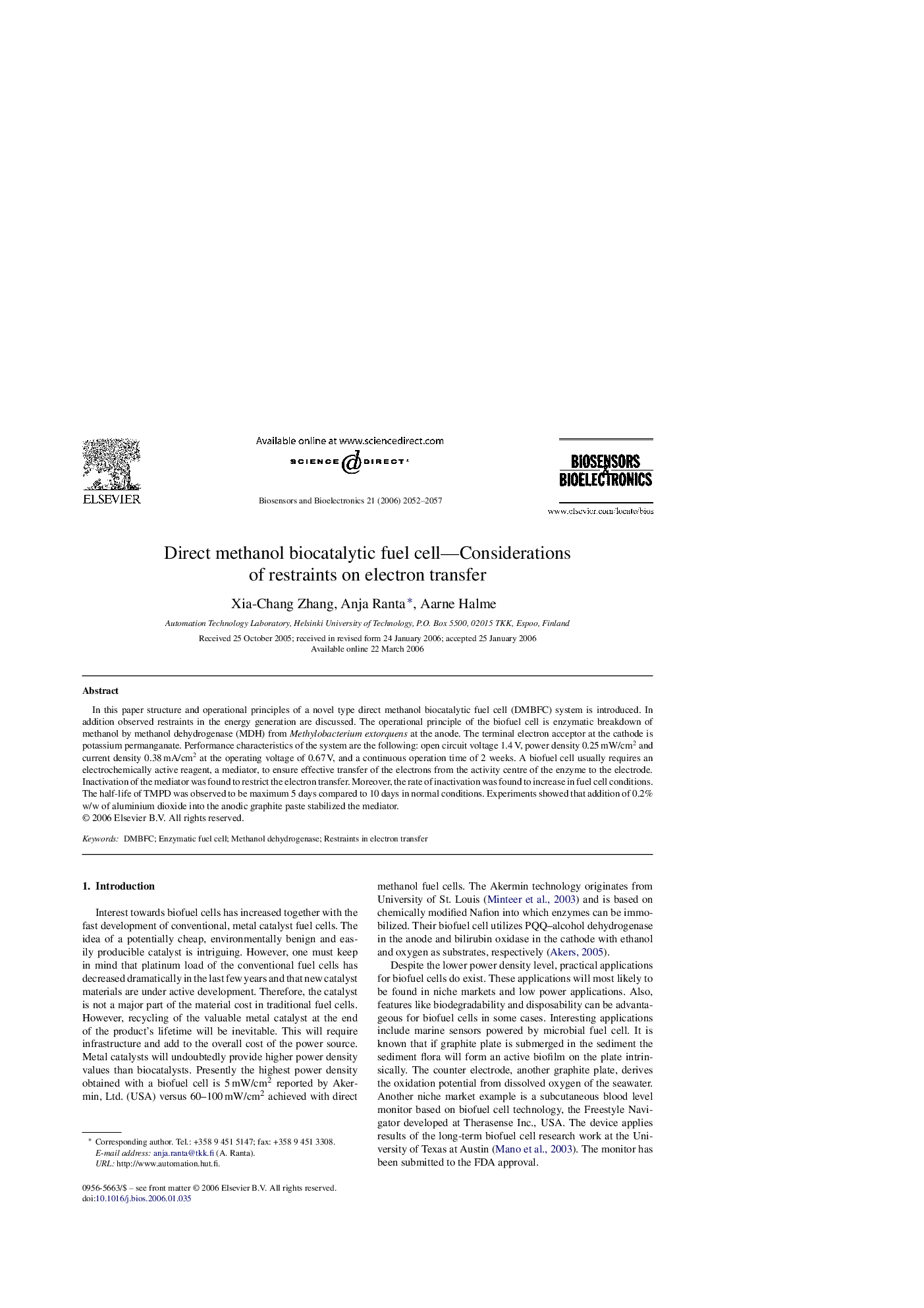| کد مقاله | کد نشریه | سال انتشار | مقاله انگلیسی | نسخه تمام متن |
|---|---|---|---|---|
| 870522 | 909873 | 2006 | 6 صفحه PDF | دانلود رایگان |

In this paper structure and operational principles of a novel type direct methanol biocatalytic fuel cell (DMBFC) system is introduced. In addition observed restraints in the energy generation are discussed. The operational principle of the biofuel cell is enzymatic breakdown of methanol by methanol dehydrogenase (MDH) from Methylobacterium extorquens at the anode. The terminal electron acceptor at the cathode is potassium permanganate. Performance characteristics of the system are the following: open circuit voltage 1.4 V, power density 0.25 mW/cm2 and current density 0.38 mA/cm2 at the operating voltage of 0.67 V, and a continuous operation time of 2 weeks. A biofuel cell usually requires an electrochemically active reagent, a mediator, to ensure effective transfer of the electrons from the activity centre of the enzyme to the electrode. Inactivation of the mediator was found to restrict the electron transfer. Moreover, the rate of inactivation was found to increase in fuel cell conditions. The half-life of TMPD was observed to be maximum 5 days compared to 10 days in normal conditions. Experiments showed that addition of 0.2% w/w of aluminium dioxide into the anodic graphite paste stabilized the mediator.
Journal: Biosensors and Bioelectronics - Volume 21, Issue 11, 15 May 2006, Pages 2052–2057